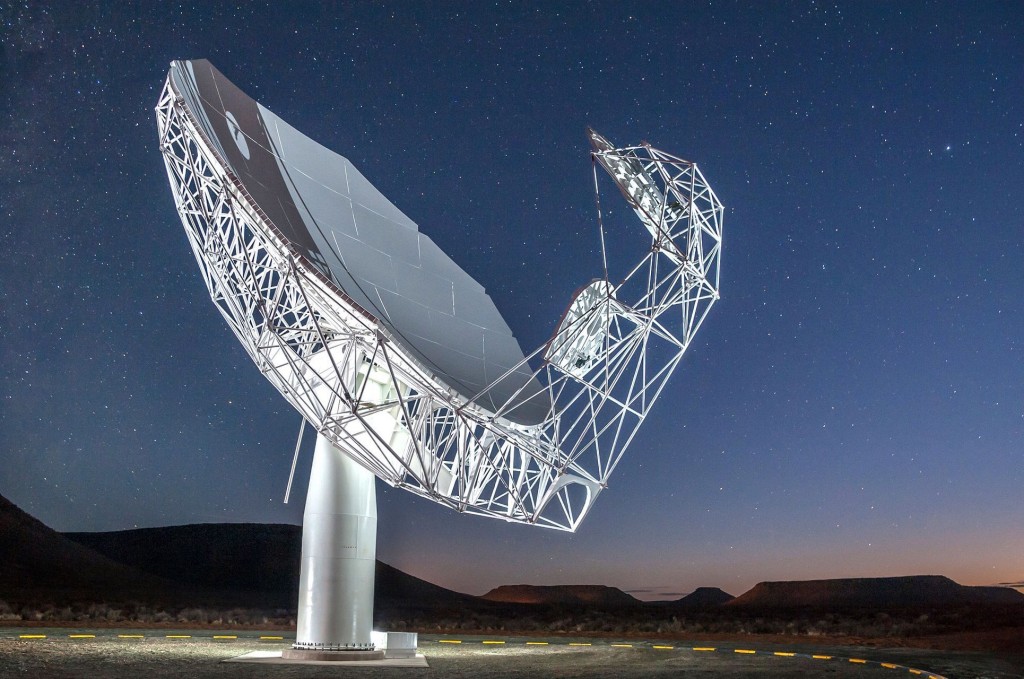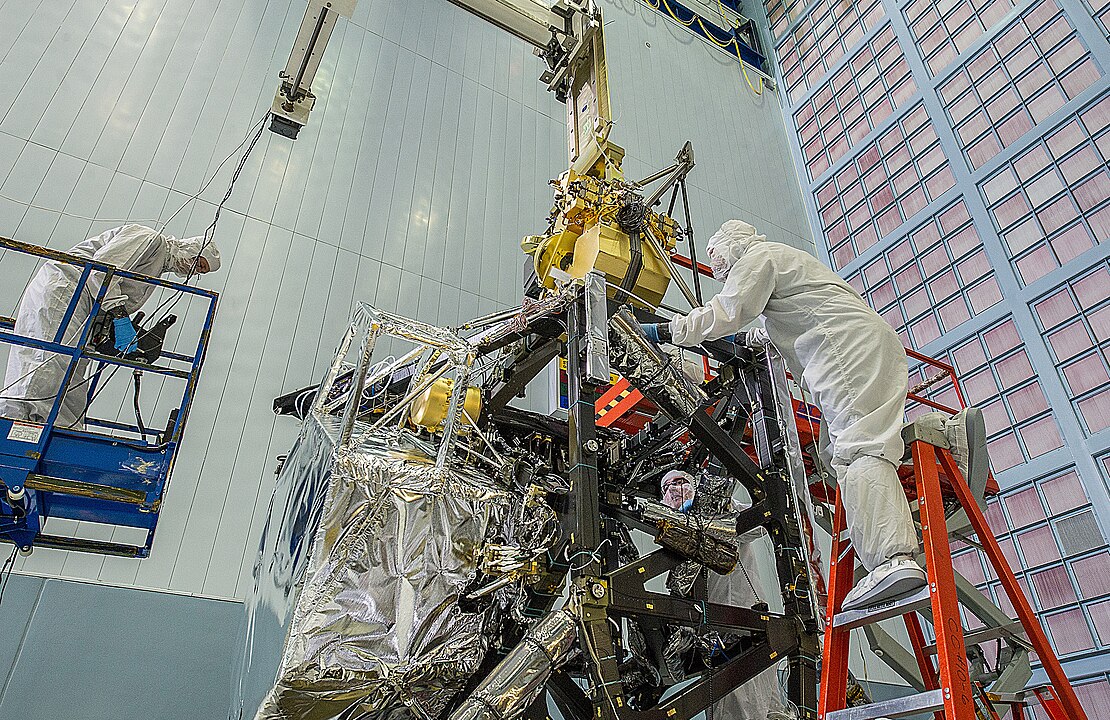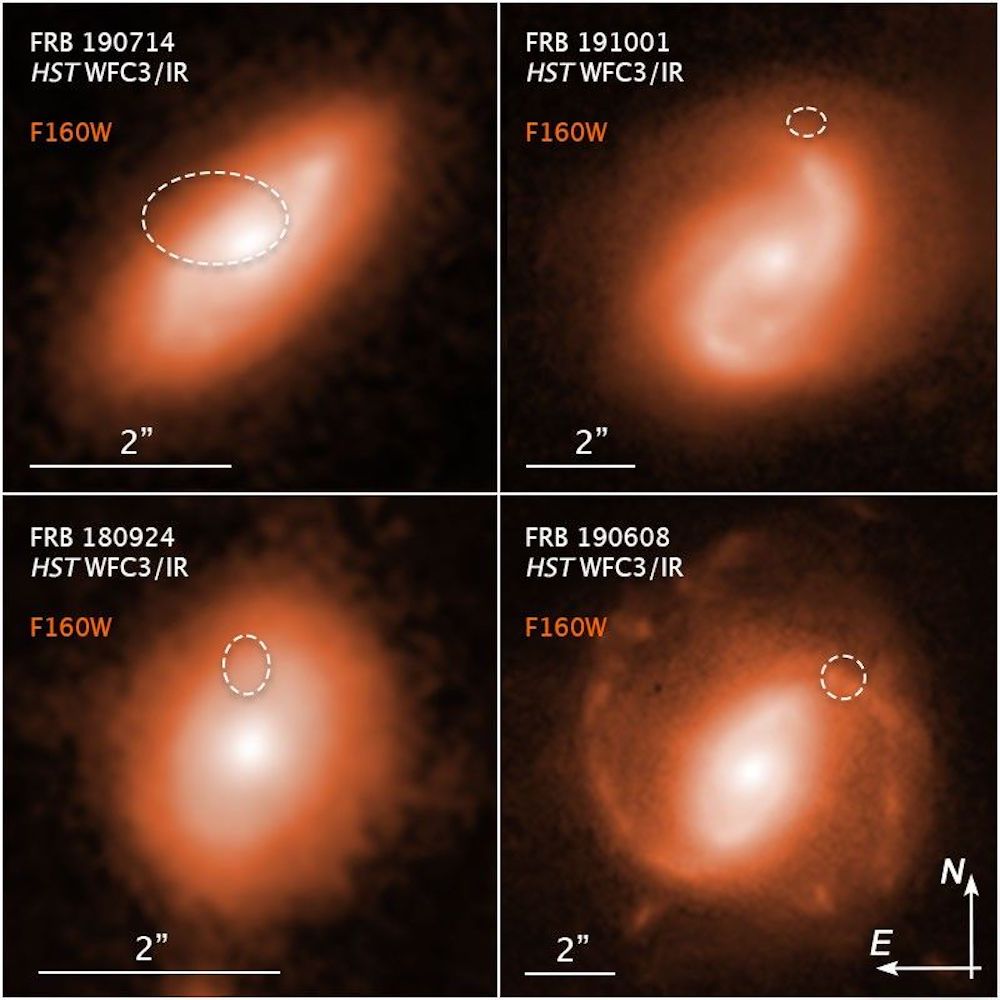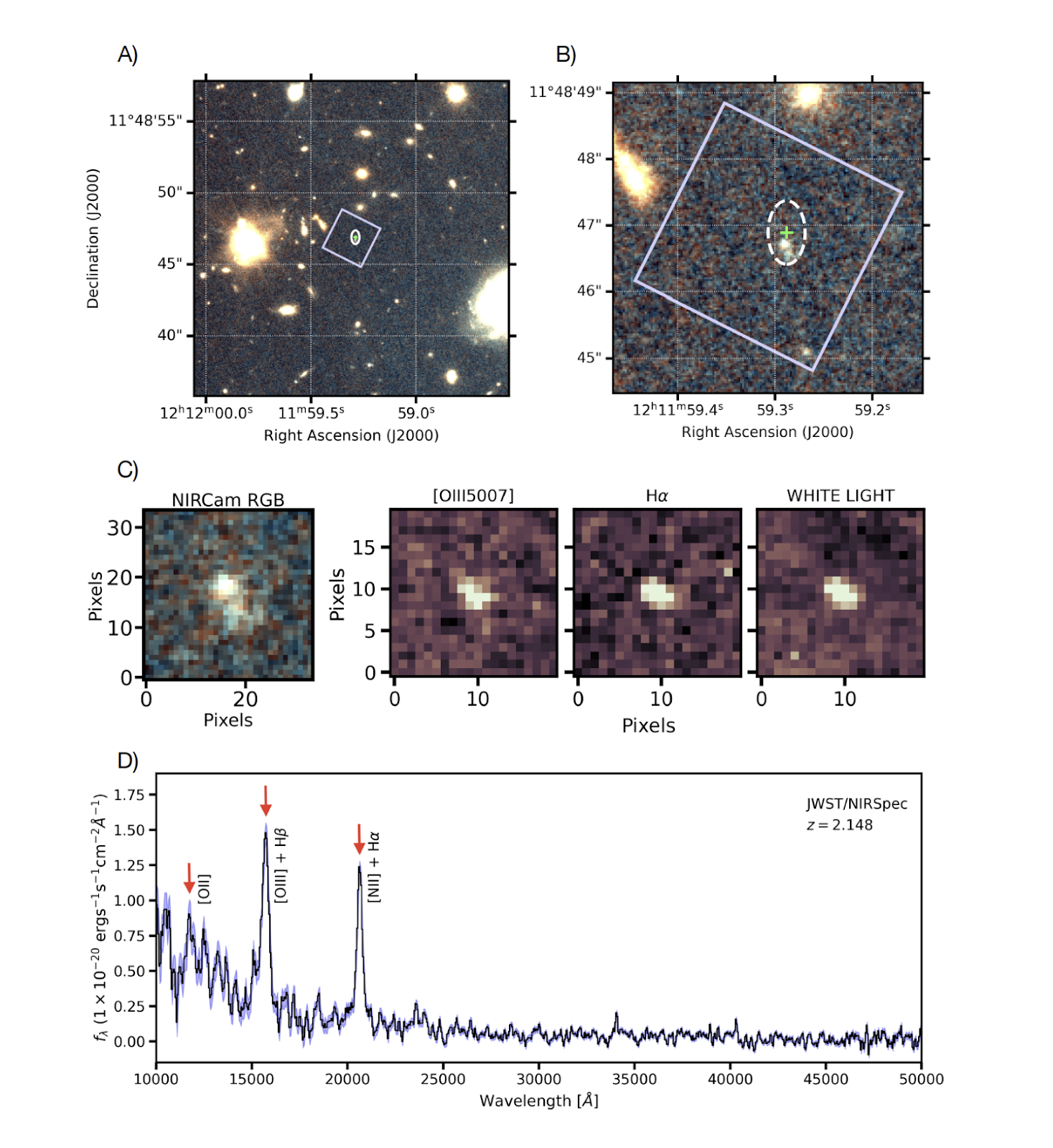Fast radio bursts (FRBs) last around a millisecond and in doing so encode otherwise unattainable information on the plasma which permeates our Universe, providing insights into magnetic fields and gas distributions. In a paper authored by Manisha Caleb from the University of Sydney, the team report upon the discovery of FRB 20240304B which lies at a redshift of 2.148 +/- 0.001 corresponding to just 3 billion years after the Big Bang.
The burst, designated FRB 20240304B, was first detected on March 4, 2024, by South Africa's MeerKAT radio telescope array. What makes this discovery extraordinary is its incredible distance, at a whopping redshift of z = 2.148±0.001, or about 3 billion years after the Big Bang. This means we're observing light that traveled for over 11 billion years to reach Earth.
 *Artist illustration of the MeerKAT Radio Telescope*
*Artist illustration of the MeerKAT Radio Telescope*
Finding the source of the signal required detective work across multiple observatories. The authors attempt to locate FRB 20240304B's host galaxy using ground based observatories and archival data but this came up short. However, follow ups with JWST's NIRCam and NIRSpec instruments succeeded in revealing the FRB's host galaxy and obtaining a spectroscopic redshift.
 NIRCam being installed in 2014 (Credit : Chris Gunn)
NIRCam being installed in 2014 (Credit : Chris Gunn)
The burst of radio waves travelled through space and as it does it disperses at a rate of approximately 2,330 pc cm⁻³, immediately suggesting an extremely distant origin. This measurement more accurately describes how much the radio signal was stretched and delayed by free electrons in space, acting like a fingerprint that reveals the vast distances the signal traveled.
This discovery doubles the redshift reach of localised FRBs and probes ionised baryons across ~80% of the history off the universe. Previous FRB detections had only reached back about halfway through cosmic time, but FRB 20240304B pushes our observational boundary to when the Universe was still in its youth. The host galaxy itself tells an interesting story. FRB 2024030 was detected with the MeerKAT radio telescope in South Africa and localised the signal to a low-mass, clumpy, star forming galaxy using the James Webb Space Telescope. This young, actively star-forming galaxy provides crucial clues about the origins of these mysterious bursts.
Since its host galaxy is relatively young, not very massive, and still forming stars, the presence of a FRB suggests an origin which can occur over relatively short timescales, such as young magnetars. This supports theories that FRBs originate from highly magnetised neutron stars called magnetars, rather than from processes requiring billions of years to develop.
 Host galaxies of fast radio bursts (Credit : NASA/Hubble Space Telescope)
Host galaxies of fast radio bursts (Credit : NASA/Hubble Space Telescope)
The discovery also reveals complex magnetic field structures spanning gigaparsec scales. Its sightline, with the Virgo Cluster and a foreground group, reveals magnetic field complexity over many gigaparsec scales. As the radio waves traveled to Earth, they passed through various structures, each leaving its signature on the signal.
Perhaps most remarkably, the observations establish FRB activity during the peak of star formation and demonstrate that FRBs can probe galaxy formation during the most active era in cosmological history. The epoch when FRB 20240304B originated corresponds to when the Universe was forming stars at its most furious rate, a period astronomers call "cosmic noon."
As next generation telescopes come online, discoveries like FRB 20240304B point toward an exciting future where these fleeting signals become messengers from the universe's distant past, helping us understand how the universe evolved from its early, chaotic youth into the structured cosmos we see today.
Source : A fast radio burst from the first 3 billion years of the Universe
 Universe Today
Universe Today
